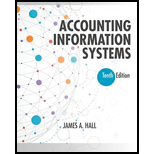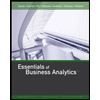
SMITH’S MARKET (SMALL BUSINESS ACCOUNTING SYSTEM)
In 1989, Robert Smith opened a small fruit and vegetable market in Bethlehem, Pennsylvania. Originally, Smith sold only produce grown on his family farm and orchard. As the market’s popularity grew, however, he added bread, canned goods, fresh meats, and a limited supply of frozen goods. Today Smith’s Market is a full-range farmers’ market with a strong local customer base. Indeed, the market’s reputation for low prices and high quality draws customers from other Pennsylvania cities and even from the neighboring state of New Jersey. Currently Smith’s has 40 employees. These include sales staff, shelf Stockers, farm laborers, shift supervisors, and clerical staff. Recently, Smith has noticed a decline in profits and sales, while his purchases of products for resale have continued to rise. Although the company does not prepare audited financial statements, Robert Smith has commissioned your public accounting firm to assess his company’s sales procedures and internal controls. Smith’s market expenditure cycle procedures are described below.
Expenditure Cycle
The expenditure cycle begins in the warehouse adjacent to the market, where Smith’s keeps its inventory of nonperishable goods such as canned goods and paper products. The company also maintains a one-day inventory of produce and other perishable products in the warehouse so clerks can quickly restock the shelves when necessary. At close of business each evening, the warehouse clerk reviews the market shelves for items that need to be replenished. The clerk restocks the shelves and adjusts the digital stock records accordingly from the warehouse PC. At this time, the clerk takes note of what needs to be reordered from the suppliers and prints purchase orders from the PC. Depending upon the nature of the product and urgency of the need, the clerk either mails the purchase order to the supplier or orders by phone. Phone orders are followed up by faxing the purchase order to the supplier. When the goods arrive from the vendor, the warehouse clerk reviews the packing slip, restocks the warehouse shelves, and updates the stock records from the PC. At the end of the day the clerk prepares a hard-copy purchases summary from the PC and sends it to the treasury clerk for posting to general ledger.
The vendor’s invoice is sent to the accounting clerk. She examines it for correctness and files it in a temporary file until it is due to be paid. The clerk reviews the temporary file daily, looking for invoices to be paid. Using the accounting department PC, the clerk prints a check and records it in the digital check register. She then files the invoice and mails the check to the supplier. At the end of the day she prints a hard-copy journal voucher from the PC, which summarizes the day’s cash disbursements, and sends it to the treasury clerk for posting to the general ledger.
Using the department PC, the treasury clerk posts the journal voucher and purchases summary information to the appropriate GL accounts.
Required
- a. Create a data flow diagram of the current system.
- b. Create a system flowchart of the current system.
- c. Analyze the physical internal control weaknesses in the system. Model your response according to the six categories of physical control activities specified in the Committee of Sponsoring Organizations of the Treadway Commission (COSO) internal control model.
- d. Describe the IT controls that should be in place in this system.
Trending nowThis is a popular solution!

Chapter 5 Solutions
Accounting Information Systems
- Hellow Dear Teacher Please Help to Solve This Financial Accounting Problemarrow_forwardWalthaus Corporation's standard cost sheet is as follows: Direct material 4 feet at $ 5.00 per foot Direct labor 3 hours at $ 10.00 per hour Variable overhead 3 hours at $ 2.00 per hour Fixed overhead 3 hours at $ 1.00 per hour Additional information: Actual results: purchased 30,000 feet of material at $5.25 per foot. (there were no beginning or ending material inventories); direct labor cost incurred was 26,000 hours at $9.75 per hour; actual variable overhead incurred, $50,000; and actual fixed overhead incurred $43,000. Overhead is applied to work-in-process on the basis of direct labor hours. The company produced 8,000 units of product during the period. The number of estimated hours for computing the fixed overhead application rate totaled 45,000 hours. What are the fixed overhead price and production volume variances? Multiple Choice $2,000 F; $23,000 U. $4,000 F; $25,000 U. $2,000 U; $23,000 F. None of the choices is correct.…arrow_forwardNo Ai 3. What is the purpose of depreciation?A. Track the market value of assetsB. Match the cost of an asset to the periods it benefitsC. Allocate cash flowsD. Record the decrease in asset liquidity need helparrow_forward
- Financial Accounting Question Solution with Detailed Explanation and Correct Answerarrow_forwardI need help 3. What is the purpose of depreciation?A. Track the market value of assetsB. Match the cost of an asset to the periods it benefitsC. Allocate cash flowsD. Record the decrease in asset liquidityarrow_forwardImpact Window Company makes storm-resistant windows. The company's sales manager estimated the sales volume to be 160,000 windows. Due to the increased hurricane activity this year, the total demand for this type of window increased from 800,000 windows to 1,000,000 windows. At the same time the company's market share fell from 20 percent to 15 percent. The company's standard contribution margin is $15.00 per window. What is the company's market share variance? Multiple Choice $740,000 favorable $740,000 unfavorable $750,000 unfavorable None of these. $750,000 favorablearrow_forward
- No chatgpt 3. What is the purpose of depreciation?A. Track the market value of assetsB. Match the cost of an asset to the periods it benefitsC. Allocate cash flowsD. Record the decrease in asset liquidityarrow_forwardPlease Make Perfect Answer For this Financial Accounting Question. Need Perfect Answerarrow_forwardNo AI 3. What is the purpose of depreciation?A. Track the market value of assetsB. Match the cost of an asset to the periods it benefitsC. Allocate cash flowsD. Record the decrease in asset liquidityarrow_forward
- What is the purpose of depreciation?A. Track the market value of assetsB. Match the cost of an asset to the periods it benefitsC. Allocate cash flowsD. Record the decrease in asset liquidityarrow_forwardDear tutor. I mistakenly submitted blurr image please comment i will write values. please dont Solve with incorrect values otherwise unhelpful.arrow_forwardPlease Get the Correct answer to this General Accounting Question without any problemarrow_forward
 Accounting Information SystemsAccountingISBN:9781337619202Author:Hall, James A.Publisher:Cengage Learning,
Accounting Information SystemsAccountingISBN:9781337619202Author:Hall, James A.Publisher:Cengage Learning, Cornerstones of Cost Management (Cornerstones Ser...AccountingISBN:9781305970663Author:Don R. Hansen, Maryanne M. MowenPublisher:Cengage Learning
Cornerstones of Cost Management (Cornerstones Ser...AccountingISBN:9781305970663Author:Don R. Hansen, Maryanne M. MowenPublisher:Cengage Learning Essentials of Business Analytics (MindTap Course ...StatisticsISBN:9781305627734Author:Jeffrey D. Camm, James J. Cochran, Michael J. Fry, Jeffrey W. Ohlmann, David R. AndersonPublisher:Cengage Learning
Essentials of Business Analytics (MindTap Course ...StatisticsISBN:9781305627734Author:Jeffrey D. Camm, James J. Cochran, Michael J. Fry, Jeffrey W. Ohlmann, David R. AndersonPublisher:Cengage Learning



